Hey. I have a maps application that uses google maps. I get the bounds off the map, and then I do some clustering markers on that grounds, but to be able to have the clusters stay at the same place, I'd like to know how to make the boundaries that I pass snap into the tilegrid that google uses. The quadtree algorithm they use for their map essentially what I'm asking for is
how do I get the bounds for the tiles that the viewport is in. I've tried to illustrate it :)

If I do the cluster calc on the tile bounds and not the viewport, when I split it up in a grid, the clusters will stay in the same place, because the grid will be absolute at each zoom level.
Also this allows for better query caching, as the queries will be a lot similar when the bounds have to "snap in" to the tiles, AND the user will be able to pan with markers in proximity being displayed already.
UPDATE
I'm starting over...
I've got this
function TileMyBounds($sx, $sy, $nx, $ny, $zoom)
{
function TileMyBounds($sx, $sy, $nx, $ny, $zoom)
{
list($nmx,$nmy) = $this->LatLonToMeters($ny/1000000, $nx/1000000);
list($ntx, $nty) = $this->MetersToTile($nmx, $nmy, $zoom);
$nbounds = $this->TileLatLonBounds($ntx, $nty, $zoom);
list($smx,$smy) = $this->LatLonToMeters($sy/1000000, $sx/1000000);
list($stx, $sty) = $this->MetersToTile($smx, $smy, $zoom);
$sbounds = $this->TileLatLonBounds($stx, $sty, $zoom);
$step = ($sbounds[3]-$sbounds[1])*1000000;
return array($sbounds[0]*1000000, $sbounds[1]*1000000, $nbounds[2]*1000000, $nbounds[3]*1000000, $step);
}
and the function where I use it looks like this:
function clusterGrid($zoom,$nelt,$nelg,$swlt,$swlg)
{
$singlemarkers = array();
$clusters = array();
list($swlg, $swlt, $nelg, $nelt, $step) = $this->TileMyBounds($swlg, $swlt, $nelg, $nelt, $zoom);
$calcbounds = $this->TileMyBounds($swlg, $swlt, $nelg, $nelt, $zoom);
$queryconcat = "";
$length_lng = ceil(($nelg-$swlg)/$step);
$length_lat = ceil(($nelt-$swlt)/$step);
$orgnelg = $nelg;
$orgswlt = $swlt;
for($i=0;$i < $length_lng + 1; $i++) {
$nelg -= $step;
$temp_swlt = $swlt;
for($j=0; $j < $length_lat + 1; $j++) {
$temp_swlt += $step;
if($nelg > $orgnelg) continue;
if($temp_swlt > $nelt) continue;
if($nelg < $swlg) continue;
if($temp_swlt < $orgswlt) continue;
$q = $this->db->select('
COUNT(*) AS CO,
(MAX(lat)+MIN(lat))/2 AS lat,
(MAX(lng)+MIN(lng))/2 AS lng')
->where('`lat` BETWEEN '.$temp_swlt.' AND '.($temp_swlt+$step).' AND
`lng` BETWEEN '.($nelg-$step).' AND '.$nelg)
->get('markers');
$queryconcat += $this->db->last_query();
$result = $q->row_array();
if($result['CO'] == 0) {
continue;
}
$clusters[] = array('lat' => ($result['lat']), 'lng' => ($result['lng']), 'size' => $result['CO']);
}
}
return array('singlemarkers' => '', 'clustermarkers' => $clusters, 'bounds' => $calcbounds, 'lengths' => array($length_lng, $length_lat));
}
UPDATE!!!! 12/03/2011 - Almost there
The tiles are somewhat precise, yet not entirely, so when panning around, the clusters can "move around" a little. Due to the fact that the $step = ($sbounds[3]-$sbounds[1])*1000000; calculation is not always the same at each zoom level, as I would've expected because I would think that a tile would have the same width and length in lat and lon as any other tile at the same zoom level.